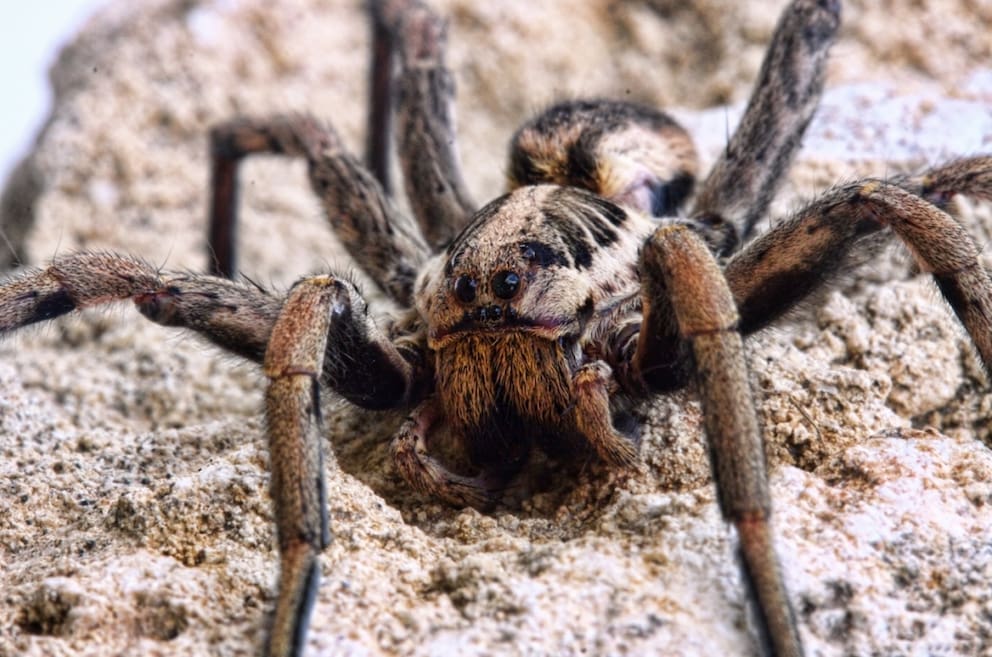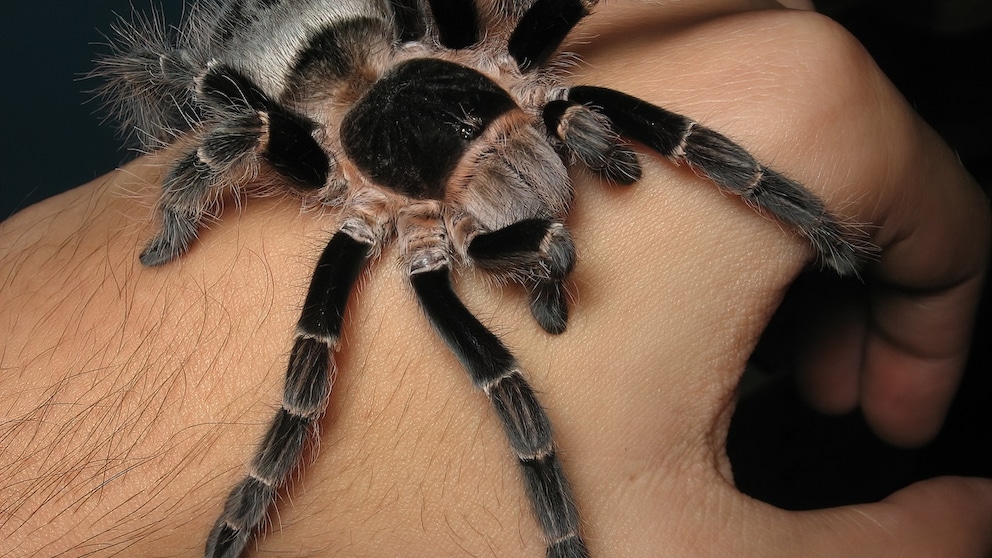April 15, 2025, 9:12 am | Read time: 5 minutes
The word “tarantula” is not commonly used in our everyday language. Yet, everyone immediately knows what it means: a large, hairy spider. Today, people might be more inclined to say “bird spider.” But do both terms really mean the same thing? PETBOOK editor and biologist Saskia Schneider explains the difference.
When you hear the word tarantula, a clear image immediately comes to mind: a large, hairy spider. Since this description also applies to most bird spiders, they are often referred to as tarantulas. But are the terms bird spider and tarantula truly synonymous, or is there a difference?
Where Does the Term Tarantula Come From?
The term tarantula first appeared in 1758 when the famous naturalist Carl von Linné named a newly discovered spider species, Aranea tarantula. The name is derived from the Italian city of Taranto. The species was especially known in the Apulia region, which is why it is also called the Apulian tarantula today.
There was once an entire group of spiders classified under the genus tarantula. However, recent genetic analyses revealed that the animals included in this group looked similar but were not all related. As a result, this genus no longer exists, and the Apulian tarantula is now known by the species name Lycosa tarantula.
Apulian Tarantula Was the “First Tarantula in the World”

Lycosa tarantula, with a body length of 30 millimeters for females and 25 millimeters for males, is among the largest European wolf spiders. However, the species is not only found in Italy but also in North Macedonia, France, Spain, Mozambique, and even Austria.
Nevertheless, encountering the animal is rather unlikely. The Apulian tarantula predominantly lives hidden in a self-dug burrow that can reach up to half a meter deep.1 However, there are other types of wolf spiders that look similar and are also referred to as tarantulas — but how do bird spiders come into play?
These Spiders Are Referred to as Tarantulas
In Europe, the term tarantula not only became established as a species name but was also generally used to describe large, hairy spiders. Among the eight-legged representatives of Europe, the largest specimens — like the Apulian tarantula — belong to the wolf spiders. For example, the Southern Russian tarantula (Lycosa singoriensis) can grow up to 40 millimeters, making it one of the largest spiders in Europe.2
Outside of Europe, there are other groups of spiders that are large and hairy. Among the best-known are the bird spiders. Especially in the English-speaking world, bird spiders are generally referred to as “tarantulas.” However, they surpass the actual tarantulas in size by a significant margin. The Goliath birdeater (Theraphosa blondi), considered the largest bird spider in the world, has a leg span of up to 30 centimeters, making it almost ten times larger than the Lycosa tarantula.3
Difference Between Bird Spider and Tarantula
Size is not the only difference between bird spiders and tarantulas. Bird spiders belong to the Theraphosidae family, which includes about 800 species. Their natural habitat is the tropics and subtropics. However, they are now found worldwide, as many species are popular terrarium pets.
All bird spiders share the characteristic of being large — typically between six and ten centimeters — and heavily haired. A distinctive feature is their defensive posture when they feel threatened. They raise their front body and the first two pairs of legs and display their fangs, known as chelicerae. Some species also defend themselves with urticating hairs, which they flick from their abdomen when threatened.4
Tarantulas, which belong to the wolf spiders, tend to flee when threatened. However, their lifestyle and hunting behavior are quite similar to those of bird spiders. Both build burrows lined with silk and lie in wait for prey nearby. A distinguishing feature of wolf spiders, setting them apart from all other spider groups, is their brood care. Wolf spiders carry their egg sacs with their spinnerets under their slightly raised abdomen.5
After hatching, the young spiders remain on their mother’s abdomen for some time, clinging to her hair. The female carries her offspring around for several weeks until the baby spiders are large enough to fend for themselves.6

The most dangerous animals in Europe

Why the platypus is the most poisonous mammal in the world

Jackal, Coyote, or Wolf – Do You Know the Difference?
Are Tarantulas Dangerous?
In the past, it was believed that a tarantula bite was poisonous and would lead to severe pain and sudden, uncontrolled movements. This belief is reflected in the saying, “like being stung by a tarantula.” Additionally, the term tarantism was used to describe dance mania, a term now used for various medical phenomena. These include the hereditary disease Huntington’s chorea and ergot poisoning, both of which are characterized by involuntary, uncoordinated movements.
While such symptoms can indeed be caused by bites from venomous spiders, the venom of wolf spiders is relatively weak. However, because these spiders were large and conspicuous compared to their truly venomous relatives like the black widow, they were attributed with causing poisoning. It was also likely believed that a large spider meant stronger venom.
The venom of bird spiders is also considered relatively harmless. A bite is said to be comparable to a bee or wasp sting. However, a bird spider bite can cause significant inflammation, as the venom contains substances that dissolve tissue. More dangerous are the urticating hairs of some bird spider species. On the skin, they cause itching and burning. If they get into the mucous membranes or eyes, they can cause severe inflammation. Therefore, it is best not to provoke a bird spider.

